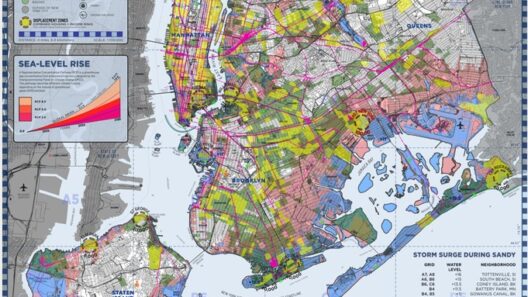Nigeria, the most populous country in Africa, exhibits a diverse climate shaped by its geographical location, topography, and seasonal rain patterns. This nation experiences a variety of weather patterns that can be broadly categorized into several distinct climatic zones: the tropical savanna, the humid tropical climate, and the arid zones in the northeastern regions. Understanding these climates is crucial for appreciating the country’s environmental dynamics and socio-economic contexts.
The climate of Nigeria can be characterized primarily by its seasonal variations governed by the interaction of the Intertropical Convergence Zone (ITCZ) and the monsoons. The ITCZ brings wet and dry seasons, profoundly influencing the weather patterns experienced throughout the year. Broadly, Nigeria can be divided into three climatic zones: the north, central, and southern regions, each exhibiting unique weather phenomena.
In the northern region, there is a predominance of a tropical savanna climate. Characterized by a long dry season and a short wet season, temperatures can soar above 40°C during the peak dry months. Rainfall during the wet season, which typically spans from June to September, is erratic and can vary significantly from year to year. The northern climate poses challenges for agriculture, as the short growing season limits the productivity of crops. Farmers in this area rely heavily on rain-fed agriculture, making them particularly vulnerable to the impacts of climate change, such as prolonged droughts.
Conversely, the central region of Nigeria experiences a more varied climate, transitioning from the dry savanna to a humid tropical climate. The city of Abuja, located centrally, typifies this climate with warm temperatures and substantial precipitation. The wet season extends from April to October, with July and August often witnessing peak rainfall. This period is crucial for crop cultivation, supporting key agricultural activities like yam and maize production. However, the increasing frequency of extreme weather events such as flooding poses a significant risk to farming practices in this region.
In the southern region, particularly along the coastline from Lagos to the Niger Delta, the climate shifts to a humid tropical climate. This area features a distinct wet and dry season, heavily influenced by the Atlantic Ocean. It experiences heavy rainfall, often exceeding 2000 millimeters annually, and humidity levels are consistently high throughout the year. The wet season lasts from March to October, with the heaviest rainfall typically occurring between June and September. The climate in the southern region is favorable for diverse ecosystems, agriculture, and economic activities, such as oil production, fishing, and commerce. Yet, it is equally susceptible to the impacts of climate change, including rising sea levels and coastal erosion, which threaten livelihoods and infrastructure.
Moreover, Nigeria’s climatic conditions are intricately linked to its diverse flora and fauna. The seasonal rains nourish a variety of ecosystems, ranging from savannas in the north to mangrove swamps in the south. Each zone harbors unique species adapted to local climatic conditions. However, climate change poses a significant threat to this biodiversity, leading to shifts in species distribution and habitat loss. As temperatures rise and rainfall patterns change, ecosystems struggle to adapt, which could result in potential extinctions and the collapse of local food webs.
In addition to the intra-national climatic variations, Nigeria is affected by more extensive regional weather patterns. The West African monsoon, which has been fluctuating in intensity and timing, plays a pivotal role in the overall climatic outlook. Changes in the monsoon system, driven by broader climatic shifts, can dramatically alter precipitation levels across Nigeria, impacting food security, water availability, and economic stability.
Understanding the implications of climate change on Nigeria’s weather patterns is essential for developing adaptive strategies. For instance, sustainable farming practices can mitigate the effects of changing rainfall patterns, while reforestation and afforestation initiatives can help restore degraded ecosystems and enhance carbon sequestration. Moreover, robust water management systems must be established to address the increasing unpredictability of water resources due to extreme weather events.
Climate-related challenges in Nigeria extend beyond environmental impacts; they are deeply intertwined with social and economic factors. Vulnerable populations, particularly in rural communities, are disproportionately affected by climate variability. Access to education, healthcare, and technology can enhance adaptive capacity, empowering these communities to withstand climatic shocks. Policymakers must prioritize sustainable development initiatives that address the systemic vulnerabilities exacerbated by climate change.
In conclusion, Nigeria’s climate is a mosaic of intricate weather patterns influenced by geographical and seasonal factors. The diverse climatic zones significantly impact social, economic, and environmental dynamics across the country. Each region’s specific climatic characteristics emphasize the necessity for targeted adaptations and proactive measures to mitigate climate change impacts. As the country grapples with the implications of global warming, promoting sustainable practices and increasing resilience will be crucial for safeguarding both the environment and the livelihoods dependent on it.







